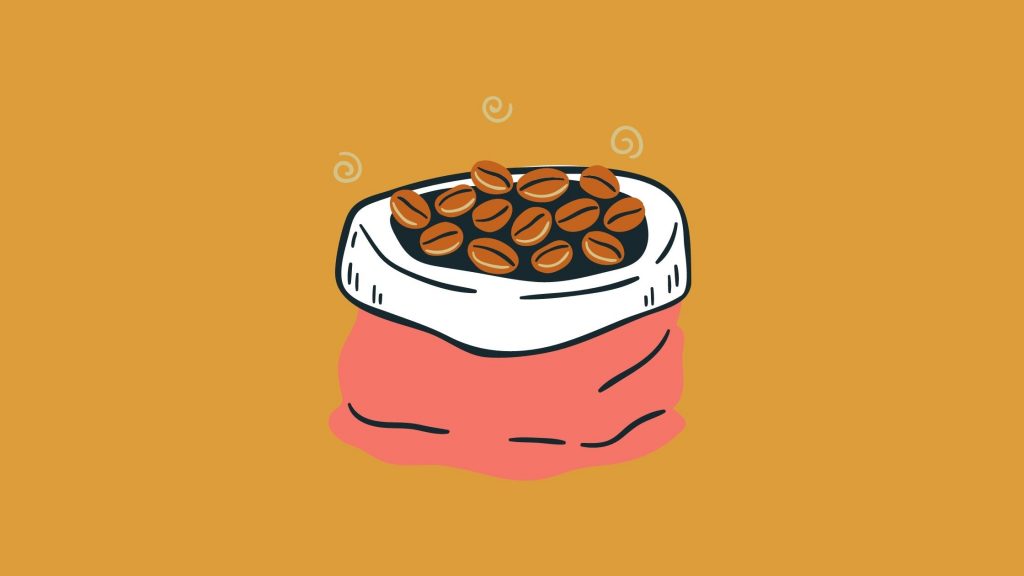We are reader-supported. We may earn from links to products. Read our Disclaimer for more.
Drinking a cup of coffee made from beans you’ve roasted yourself is immensely rewarding. Home-roasted coffee beans are more flavorful and have more nuances than store-bought coffee. To learn how to roast your own coffee beans and taste the difference for yourself, go to Step 1. After that, you may start making coffee.
Methods To Roast Your Own Coffee Beans
Method 1: Basics of Coffee Roasting
Whatever method you use to roast your beans, there are a few qualities of the beans you should keep in mind when roasting them. When you stop roasting the beans, it will mostly depend on your preferences.
Keep your sense of smell in mind
When you first start heating your green coffee beans, they will become yellowish and have a grassy odor. When they start roasting, they will begin to smoke and smell like real coffee.
It’s important to remember that the length of your roast is determined by the color of the beans
While you’ll start with ‘green’ beans, as they roast, they’ll take on a variety of colors. It’s a good rule of thumb to remember that the darker the bean, the fuller the body.
Light brown: This color should be avoided since it can cause a sour taste. The body is light, the scent is moderate, and the sweetness is light. This roast is popular in the eastern United States and is light-medium brown. It has a robust body, a rich scent, and a slight sweetness to it.
Full medium brown: In the Western United States, this is a common roast. It has a big body, a powerful scent, and a little sweetness.
Medium-dark brown: This roast is also known as a Light French or Viennese roast because of its medium-dark brown color. It has a thick body, a powerful scent, and a robust sweetness.
Dark brown: Espresso or French is a dark brown coffee. It has a medium body, a complete sweetness, and a medium scent.
Very dark (nearly black): This color is sometimes known as Spanish or Dark French since it is quite dark (almost black). It has a light body, a light scent, and a low level of sweetness.
Keep an ear out for a crackling sound
The water inside the beans will begin to evaporate as they roast, resulting in a cracking sound. Cracking is divided into two stages: first cracking and second cracking. These two noises can be heard when the temperature rises during the roasting process.
Method 2: Cooking in the Oven
Roasting coffee beans in the oven can occasionally result in an uneven roast due to the lack of airflow. If you operate the oven correctly, the lack of airflow can boost the flavor richness.
Preheat the oven to 450 degrees Fahrenheit (230 degrees Celsius)
Prepare your pan while your oven is heating up. You’ll need a baking sheet with numerous small holes or slots and a lip to keep all the beans in the pan for this procedure. Any kitchen supply store will have these pans. You can create your roasting sheet if you don’t want to buy a new pan but have an old baking sheet with a lip sitting around. Take your pan and carefully drill holes in it using an 18-inch drill bit. The holes should be 12 inches apart and small enough to prevent the beans from falling through.
Arrange the beans on the pan
Pour the beans onto the baking sheet in a single layer across the entire pan. The beans should be close together but without overlapping each other. Place the baking sheet with the beans on the center rack of the oven once it is warm enough.
Roast for 15 to 20 minutes, depending on the size of the beans
Listen for popping or cracking noise. The water in the beans is evaporating at this point. The popping sound indicates that the beans are beginning to roast and brown. To help them produce an even roast, stir them around every few minutes.
Take the baked beans out of the oven
Remove them from the heat as soon as they’ve reached your desired level of doneness. Pour the beans into a metal colander and stir them around to let them cool down. This will aid in the cooling of the beans as well as the removal of the chaff.
Method 3: Make Popcorn with a Popcorn Popper
An old popcorn popper is ideal for roasting your beans on the stovetop. Crank-style poppers are the best. You can usually purchase them at secondhand kitchen supply stores or online. Stovetop roasting will provide deeper notes and a greater body, but it will also lessen the aroma and brightness of the beans.
Set the empty popper on top of the stove
Bring to medium heat and cook until the popper reaches a temperature of around 450 °F (232 °C). Check the temperature of the popper with a deep fryer or a candy thermometer if possible.
You can use a large skillet or pan instead of a popcorn popper if you don’t have one or don’t want to buy one. Make sure it’s completely clean, or your beans will absorb the flavor of whatever came before them.
Place the coffee beans in the pot
You should roast only 8 ounces of coffee beans at a time. Close the popper’s lid and start twisting the crank handle. To ensure that the beans are uniformly roasted, you will need to stir regularly. If you’re using a pan or skillet, you’ll need to keep stirring regularly because the beans are more likely to burn in a skillet or pan.
Keep an ear out for a crackling sound
You should hear a cracking sound after around four minutes (but it could take up to seven minutes). This signals the beans are starting to roast. Simultaneously, the beans will begin to emit coffee-scented smoke, which can be quite powerful. To let the smoke out, turn on your oven hood fan and open a window. Take note of when the beans begin to crackle.
Check the color of the beans regularly
Wait one minute after the crackling begins before checking the color of the beans. Pour the beans into a metal colander once they’ve reached the desired color and continue to stir them until they cool.
Conclusion
Roasting your coffee beans at home may be a lot of fun. It not only has numerous advantages, but you can discover a new favorite coffee bean. There are a plethora of roasts to choose from, and with some experience, you’ll be brewing great coffee in no time.
Roasting your coffee beans at home is a no-brainer if you’re a coffee fan. It’s entertaining, it saves you money, and it produces fresher better-tasting coffee. You now have all of the information you need to roast coffee beans at home, thanks to this article. Even if you only have the essentials in the kitchen.

